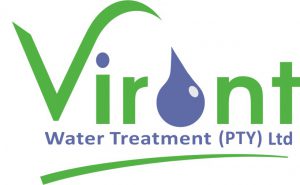Reedbeds
A reed bed employed for the purpose of treating waste effluent is a constructed wetland that imitates a natural wetland but where the influent to and effluent from the wetland is permanently controlled and the effluent within the wetland is always contained by means of an impermeable separation layer to prevent both effluent leaking into the ground water as well as the ingress of ground water into the reed bed. The reed bed serves to polish treated effluent water and provide important backup capacity should the secondary treatment process prior to the reed bed fail for any reason or become organically overloaded.

Established Reedbed with distribution ring

Newly planted Reedbed
Reed beds are typically constructed on a clay base with layers of stone that are typically sourced as recycled material from demolished buildings. The reed bed provides an ideal environment for the growth of wetland plants, such as reeds, and indigenous plants to a particular area are used wherever possible. As much as the plants themselves take up nutrients from the effluent stream, a food web comprising a host of micro-organisms is created in the root zone of the reeds and plants and it is this food web that degrades nutrients and organic material present in the water so that the plants and other organisms can take up the nutrients.

Diversity of plants in a Reedbed

Strong plant growth in a healthy Reedbed
There are numerous important considerations to make in designing a reed bed for a particular effluent flow. Firstly, the effluent needs to have been pre-treated by a certain degree first as it is not possible to discharge raw effluent into a reed bed as it will end up as highly odorous and unhealthy cess pit. The effluent loading rates on the reed bed also need to be calculated carefully to determine the size of the reed bed for the particular plants chosen. Plant choice is very important in that some plants are too invasive in a reed bed environment and choke out other beneficial species of plant. Plant diversity in a reed bed is important as different plants are capable of supporting different communities of other flora and fauna which all contribute to the overall health of the reed bed environment. A reed bed that is rich in insect and bird life is a good indication of a healthy ecosystem and the presence of frogs in particular is considered to be the most definitive confirmation of a well functioning reed bed system. An overgrowth of one particular plant that becomes too desiccated during low loading periods, especially in summer, can also cause a fire hazard. Certain plants also need harvesting more often than others to keep the reed bed operating optimally under a healthy reed population and to prevent it getting overgrown and clogging up with dead plant matter that starts decomposing and negating the treatment benefits of the reed bed. The reed bed has a number of other important roles in the treatment process. For example the E.Coli bacterium, which is always present in sewage as it is present in the gut of all warm blooded animals and for this reason is used as an indication of the presence of other pathogens in the effluent, mostly dies off in the secondary treatment bioreactor, but not always completely. In the reed bed food web E.Coli is out-competed by other organisms in conditions that are not suited to its survival and effectively it is rendered inactive through starvation.
